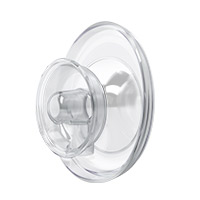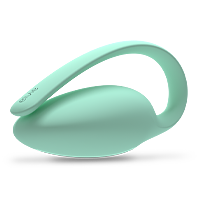How do you know if you are doing Kegels correctly? We totally get it — it’s a difficult exercise to get right. It’s no easy feat finding your pelvic floor muscles, let alone isolating them and exercising them correctly. And to top it off, it’s easy to make mistakes that can stunt your progress and may even cause damage to your pelvic floor.
Just like with other exercises, your form is crucial to carrying out the exercise safely and correctly. So what mistakes should you look out for? If you’re wondering how to properly do Kegels, you’ve come to the right place. We’ve listed 5 of the most common mistakes made when people are doing their Kegels, how to spot them, and how to avoid them. Before we jump into the list though, let's review the proper kegel technique.
How to properly do Kegels
Kegels are pretty straightforward to perform, but it’s not always easy to get the technique just right. To get the most out of your Kegel workouts, simply follow these steps:
Take a quick trip to the toilet and empty your bladder.
Get comfortable, either in a chair, or lying down on the ground.
Locate your pelvic floor muscles (imagine you’re trying to hold your urine mid-flow, but without squeezing your buttocks or inner thighs).
Tighten your pelvic floor muscles and count for 3-5 seconds.
Relax your pelvic floor muscles and count for 3-5 seconds.
Repeat this 10 times — 3 times per day (morning, afternoon, and evening).
Find you can’t hold kegel exercises for more than a second or two? Don’t worry! As you practice, this should improve.
If you find it difficult to master the technique, Elvie Trainer can help make sure you’re engaging the right muscles while adding a little fun into your Kegel workouts.
Now you know the proper way to do Kegels, let’s take a look at some of the most common pelvic floor pitfalls:
1. Using the wrong muscles
When you’re first giving Kegels a go, it can be pretty difficult trying to find your pelvic floor muscles and learning how to exercise them. Many women, when first starting out, tend to contract their abdominals or glutes rather than their pelvic floor and therefore end up seeing no results.
One method of locating your pelvic floor is stopping the flow of pee when you’re on the toilet. The muscles that are used to do this are your pelvic floor muscles and now you know where they are and how to contract them. This is an effective method for locating your pelvic floor muscles, but you shouldn’t use it as a way of performing Kegels. Stopping mid-urination can train your body to believe that is what’s meant to happen all the time, and in turn can lead to developing urinary incontinence or other urinary dysfunction.
Another method to ensure you’re exercising the correct muscles is to use a pelvic floor trainer with biofeedback. Elvie Trainer allows you to monitor your pelvic floor movements in real time and helps to identify and improve your technique. This means you can see whether you’re carrying out your Kegels correctly without having to guess, and you’ll be able to track your progress as your pelvic floor strengthens.
2. Arching your lower back
Form is just as important for Kegels as it is for other exercises. This means that exercising your pelvic floor without paying attention to how your body is positioned, is going to be less effective.
To carry out a kegel correctly, you’ll want to first make sure your bladder is empty and then lie down. Take a deep breath to relax and as you breathe out squeeze your pelvic floor inwards and upwards. Hold the contraction for 3 to 5 seconds, and then release and rest for 5 seconds. While doing this, focus on how your body is positioned and try to make sure that you’re not sticking your tailbone out, into the floor.
By not arching your lower back, it’ll feel like it’s making your Kegels easier; however, you’ll be engaging the incorrect muscles and will end up stunting your progress. You’ll want to create a lifting motion as well as a squeezing motion — one of the more common ways women achieve this is by visualising that you’re lifting a blueberry with your vagina.
3. Holding your breath
Holding your breath won’t benefit your pelvic floor muscles, but it will tire you out, negatively affect your posture, and reduce the delivery of oxygen to the muscles. This isn’t the whole story, either…
By holding your breath while doing Kegels, you’ll create an increase in intra-abdominal pressure. This pressure will make you feel tight and like your Kegels are really working; however, in reality, it’s putting pressure onto your pelvic floor and this pressure can lead to pelvic dysfunction. If you can’t hold kegel exercises as much as you’d like, controlling your breath may just fix this for you.
The easiest way of getting around this one is by simply being aware that it’s an issue! Most of us will hold our breath without realizing it, so focus on maintaining a breathing pattern. This will not only stop you from holding your breath but will also help with your posture and the overall effectiveness of the Kegels.
4. Overworking yourself
It can be easy to overwork yourself when you're doing Kegels. The pelvic floor is a group of small muscles that make small, subtle movements, and are not intended to be put under heavy strain.
Remember: it’s recommended you hold a contraction for between 3 and 5 seconds before releasing, rest for 3 to 5 seconds and then repeat. This process should be done 10 times and can be done up to 3 times a day.
Your pelvic floor needs to rest to repair and become stronger. Holding contractions for too long or doing more than 3 sets a day isn’t going to give your pelvic floor the time it needs to repair itself, and may end up causing damage.
5. Being too patient for results
If you’re carrying out your Kegels correctly, you should see some results after a week or so. If you’re not seeing any results it could be due to one of two things:
You’re not executing your Kegels correctly
Kegels may not actually be able to bring you the results you want
It may be worth speaking to a doctor at this point, as they’ll be able to advise you on whether Kegels will benefit you, or if perhaps a different exercise would suit your goals better.
For example, If you’re experiencing pelvic pain and are using Kegels as a way of reducing that pain, you’re unfortunately not going to see any results. Down-training exercises and breathing patterns used to relax the muscles will be more effective.
What happens if you do Kegels wrong?
Thinking about it might make you squeamish, but as with any other muscle in the body, the pelvic floor can get too tight or short, leading to uncomfortable cramps and spasms. This is why it’s crucial that you familiarize yourself with the correct way to do Kegels before diving straight in!
As with any other exercise, rest is super important. Fail to rest up, or spend too long holding your contractions, and you could injure your pelvic floor muscles, which could lead to:
Painful sex
Urinary incontinence
The urge to urinate becoming more frequent or urgent
Bladder pain
Constipation or difficulty passing stools
Pain in other areas, including the pubic bone, tummy, hips, lower back, and tailbone
If you start to experience any of these symptoms it’s always best to rest up, take a break from the Kegels, and visit your healthcare provider for advice.
So there you have it — now you know how to correctly do Kegels, why not buff up on your knowledge with our guide to everything Kegel related or discover 12 myths about the pelvic floor with Dr. Siegel.











 7 minute read
7 minute read